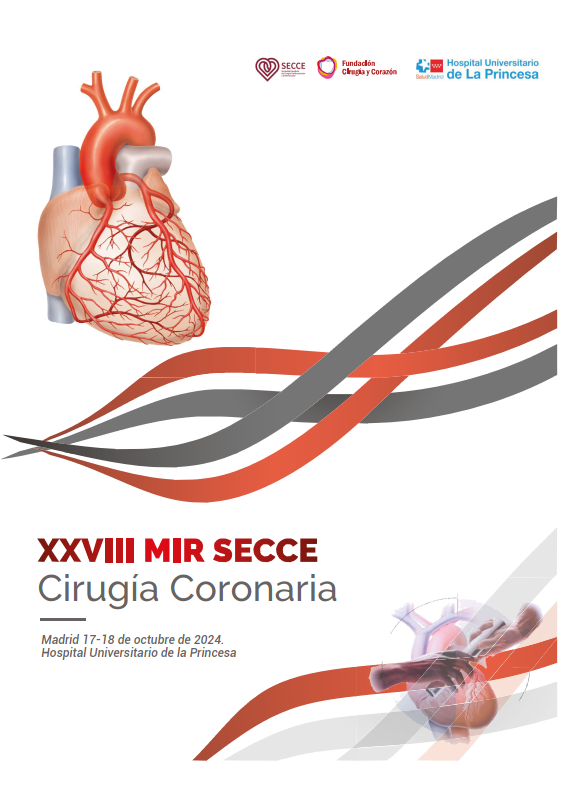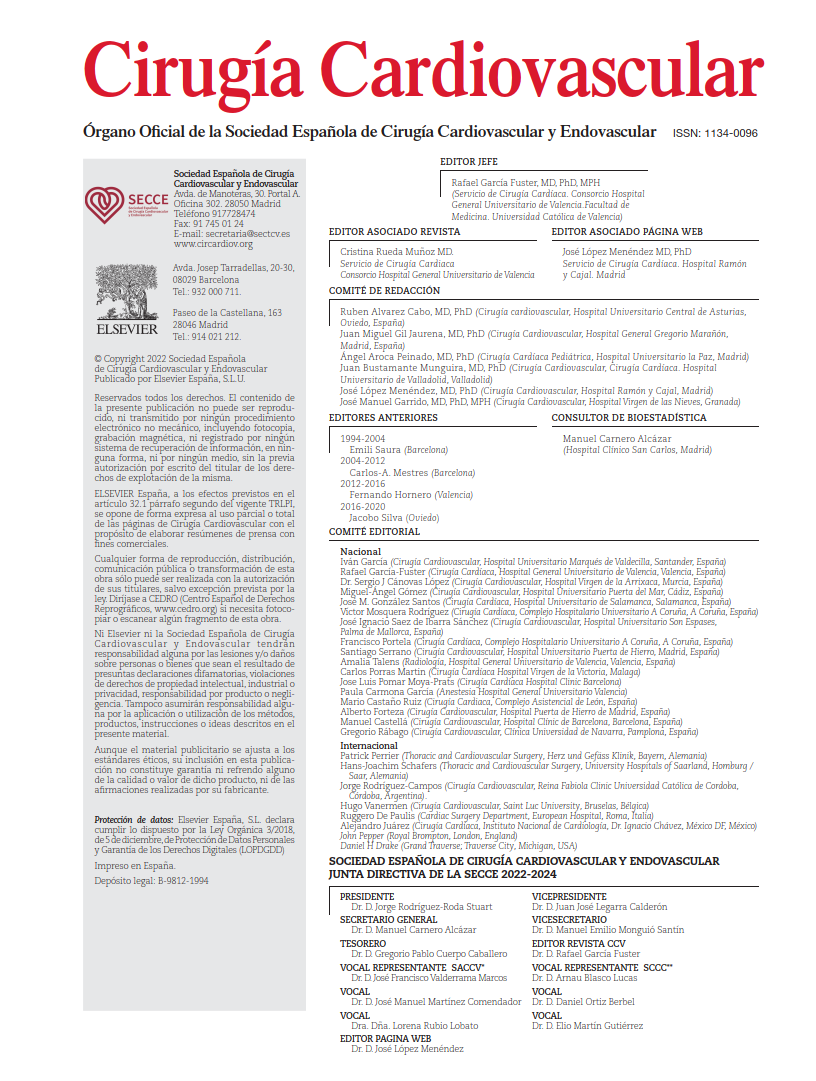Transcatheter aortic valve replacement (TAVR) has become the standard treatment for patients with severe symptomatic aortic stenosis and high surgical risk, particularly via the transfemoral route. However, a significant proportion of patients present with unfavorable iliofemoral anatomy, requiring alternative access routes. Among these, the transcarotid approach has gained prominence due to its technical feasibility and safety profile. Although short- and mid-term results have been favorable, long-term data beyond the first year remain scarce. The study by Del Portillo et al. addresses this gap by evaluating, for the first time, the 5-year clinical, functional, and echocardiographic outcomes following transcarotid TAVR (TC-TAVR) in a prospective cohort of selected patients.
This prospective study included 110 consecutive patients with moderate-to-high surgical risk who underwent TC-TAVR between 2015 and 2018. The aim was to assess clinical, functional, and echocardiographic outcomes at five years. The mean age was 77 years, and 57.7% were male. The incidence of the composite endpoint (all-cause mortality, stroke, or rehospitalization related to the procedure, the valve, or heart failure) was 54.5%. Overall mortality reached 45.6%, and the stroke rate was 8.2% (1.9 per 100 patient-years), with 2.7% being disabling events. Rehospitalization rates were 27.2%. Improvements in valve hemodynamics, functional class (NYHA), and quality of life (EQ-VAS) after the procedure were maintained long term (p < .001). Only one case of structural valve deterioration was reported (0.9%). Atrial fibrillation and chronic kidney disease were associated with poorer outcomes. No significant differences were observed in outcomes based on the type of prosthesis (self-expanding vs balloon-expandable).
The authors conclude that transcarotid access for TAVR offers a safe and effective alternative for patients with no viable transfemoral access. In this cohort of moderate-to-high surgical risk patients, approximately half remained free from major cardiovascular events at five years. The annual stroke rate was low, and the early improvements in hemodynamics, functional class, and quality of life were sustained over time. These findings support transcarotid access as a reasonable alternative to surgery in selected non-transfemoral candidates.
COMMENTARY:
This study provides a rarely explored yet clinically relevant perspective: the long-term evolution of TC-TAVR. Although this access route is typically reserved for patients unsuitable for transfemoral procedures, its 5-year outcomes are notable for their consistency and robustness. Freedom from major cardiovascular events in over 45% of the cohort, along with a low annual stroke rate (1.9 per 100 patient-years), reinforce the validity of this approach in complex patients.
The sustained NYHA class (with most survivors in class II) and quality of life, as measured by the EuroQol visual analog scale, add a functional and subjective dimension often overlooked in studies focused solely on mortality. Additionally, the stability of echocardiographic parameters—with no significant increase in gradients or prosthetic dysfunction—supports the durability of the procedure. It is particularly remarkable that only one patient experienced structural valve deterioration and one other developed prosthetic thrombosis resolved with anticoagulation, yielding a valve failure rate under 1%.
These findings align with the experience at the University Hospital of A Coruña (CHUAC), where over 480 non-transfemoral TAVR procedures have been performed since 2009. In the last 190 cases, the transcarotid route has been the most frequently used, with a 30-day mortality of 1.6%, stroke rate of 0.8%, vascular complications of 1.6%, and a permanent pacemaker implantation rate of 12%. This, despite a population with advanced age (mean 82 years) and a mean EuroSCORE II of 7%. More than 80% of the valves implanted were Edwards SAPIEN 3®, although experience has also been gained with other platforms such as Meril Myval®, providing a solid basis for device comparison. We are currently analyzing our long-term outcomes, which we plan to publish shortly. The population treated at our center shares many features with the present study: elderly patients, intermediate-to-high surgical risk, and no viable femoral access. This similarity reinforces the validity of the comparison and suggests that favorable results with transcarotid access may be reproducible in real-world settings with sufficient surgical expertise and appropriate case selection.
The prospective design and complete follow-up enhance the methodological quality of this study. However, the absence of a control group limits direct comparisons with other access routes. Even so, the authors contextualize their findings using data from randomized trials such as PARTNER 2 and SURTAVI, which compared transfemoral TAVR with surgery in intermediate-risk patients. Although the populations are not entirely equivalent—since the current study excluded patients with complex vascular comorbidities from femoral access—the mean STS score was similar, allowing at least a tentative comparison. Notably, 5-year mortality and stroke rates were comparable or even lower than in those trials, which is remarkable given the higher anatomic complexity of this cohort.
The association of atrial fibrillation and chronic kidney disease with poorer prognosis is unsurprising but confirms their relevance in the carotid access context. Furthermore, most strokes occurred late and were not anatomically linked to the access side, supporting the hypothesis that carotid manipulation does not increase long-term cerebrovascular risk.
From a practical standpoint, this study consolidates the role of transcarotid access as a safe and effective option for selected patients. In many centers, the choice of alternative access remains driven more by local expertise than by comparative evidence. This article provides strong arguments to prioritize the carotid approach over more complex or invasive routes such as subclavian or transapical access, particularly in patients with unfavorable femoral anatomy but no significant carotid disease.
This work should also be interpreted as a call to action for cardiac surgery teams. Unlike more percutaneous alternatives, the transcarotid approach requires precise surgical dissection of the carotid artery, positioning surgeons as key players in its development and implementation. At institutions like ours (CHUAC), this procedure is now standard practice and demonstrates that surgical leadership in TAVR is not only feasible but essential. The growing evidence supporting its long-term safety and efficacy underscores the importance of carotid access as a promising tool. Therefore, it is imperative that cardiac surgeons engage actively, acquire the necessary competencies, and participate in the indication and execution of these procedures. Otherwise, we risk relinquishing a territory that, by training and technical capability, rightfully belongs to us.
REFERENCE:
Del Portillo JH, Kalavrouziotis D, Dumont E, et al. Five-year outcomes of transcarotid transcatheter aortic valve replacement. J Thorac Cardiovasc Surg. 2025;169:1452–1459. doi:10.1016/j.jtcvs.2024.06.017



